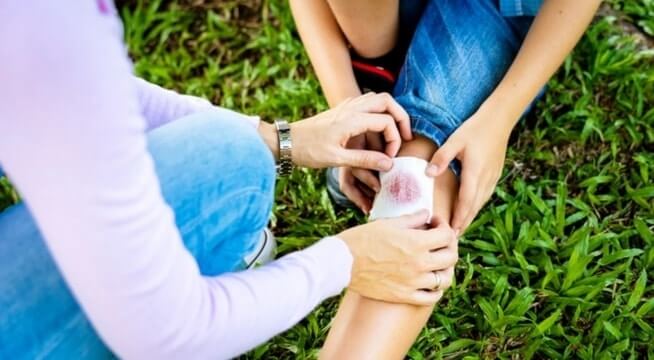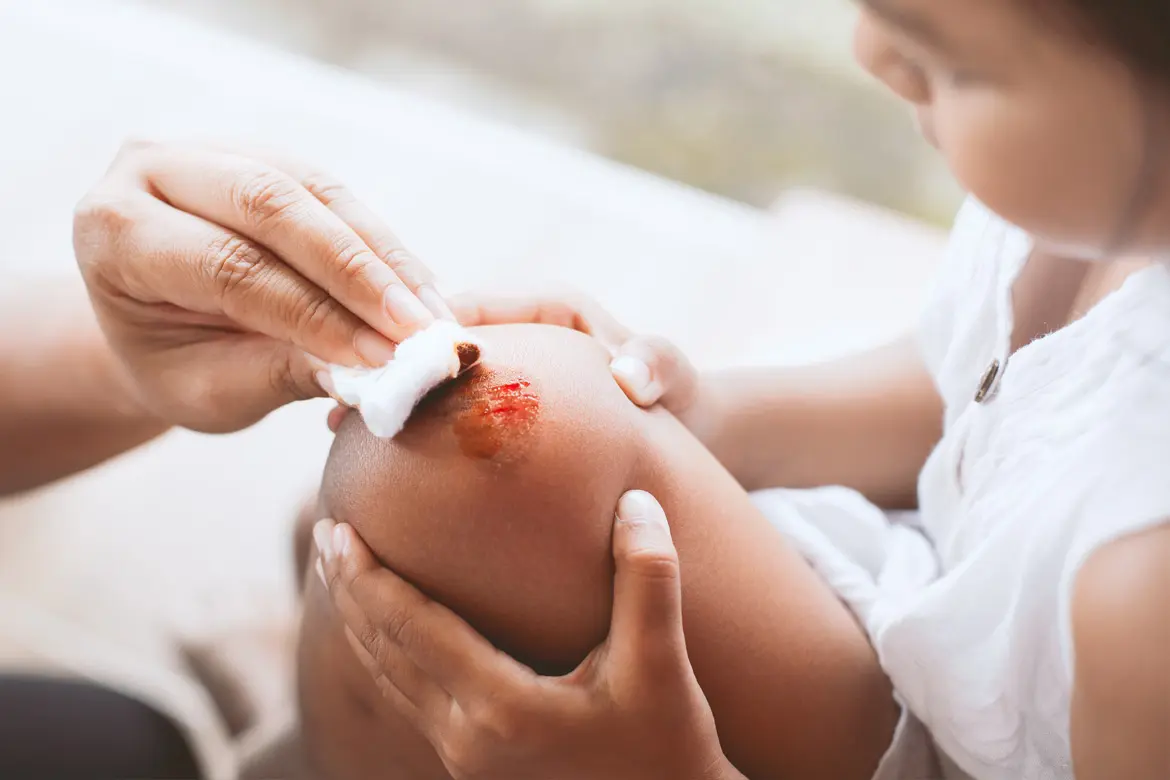Lacerations, which are deep cuts or tears in the skin, are a common injury that can occur at any age. While some lacerations are minor and can be treated at home, others may require professional medical attention to prevent infection, control bleeding, or promote proper healing. Understanding the common causes of lacerations and how to prevent them is essential in protecting yourself and your loved ones from unnecessary harm. In this article, we will discuss the typical causes of lacerations and practical prevention tips to reduce the risk of injury.

Common Causes of Lacerations
Lacerations can occur for a variety of reasons, often depending on the environment and activities in which a person is engaged. Below are some of the most common causes of lacerations:
Accidents at Home
The home is one of the most frequent places where lacerations occur, especially for children. Common household items, such as knives, glass, or sharp edges of furniture, can easily cause deep cuts. For example, a child running through the kitchen may accidentally touch a sharp knife, or an adult may trip and fall into a broken glass. Lacerations in the home are often a result of slips, falls, or mishandling sharp objects.
Prevention Tip: To minimize the risk of lacerations at home, keep sharp objects out of reach of children, ensure kitchen tools are stored safely, and use non-slip mats or rugs in areas prone to spills. It's also essential to teach children about handling objects like scissors or knives safely. At Allkidzurgentcare, we advise on childproofing your home to avoid common household injuries.
Sports Injuries
Physical activities, especially contact sports like football, soccer, and basketball, are common causes of lacerations. A fall, collision, or direct contact with equipment can cause cuts to the skin. Lacerations from sports injuries can range from mild abrasions to more serious, deep wounds that may require stitches.
Prevention Tip: Always wear appropriate protective gear, such as shin guards, helmets, and padding, when participating in sports. Ensuring that playing fields and courts are well-maintained can also reduce the risk of tripping or falls that might result in lacerations. If your child plays contact sports, it's a good idea to have a check-up at Allkidzurgentcare before the season starts to ensure they are in good health to prevent injuries.
Work-Related Injuries
Certain professions, such as construction, manufacturing, and healthcare, often involve working with sharp tools or equipment that can cause lacerations. Whether it's handling heavy machinery or dealing with knives in food service, these types of work environments carry a higher risk of cuts and wounds.
Prevention Tip: Workers in high-risk industries should always wear proper protective clothing, including gloves, goggles, and face shields. It's also crucial to receive proper training on how to use equipment safely. Regular safety inspections and keeping work areas clean and well-organized can significantly reduce the chances of accidental injuries. If a work-related laceration occurs, visit Allkidzurgentcare for professional care.
Animal Bites and Scratches
Lacerations can also result from bites or scratches from animals, particularly pets like dogs or cats. While most pet bites are minor, some can result in deep lacerations that require medical attention. Bites from wild animals or even scratches from cats can introduce bacteria, leading to infection if not properly treated.
Prevention Tip: To prevent animal-related lacerations, avoid provoking animals, especially those you are unfamiliar with. For pets, ensure they are trained and well-socialized. If your child is playing with a dog or cat, supervision is key to preventing accidents. If a bite or scratch does occur, it’s important to clean the wound thoroughly and seek medical attention at Allkidzurgentcare if needed.
Motor Vehicle Accidents
Car accidents, motorcycle crashes, and bicycle falls can cause severe lacerations. When a person is thrown from a vehicle or collides with another object, the impact can result in deep cuts and abrasions. These injuries are often serious and may involve not just lacerations but also broken bones and internal injuries.
Prevention Tip: Always wear a seatbelt when driving or riding in a car, and make sure your children are in appropriate car seats or booster seats. For cyclists and motorcyclists, wearing a helmet and protective gear can significantly reduce the risk of injury. At Allkidzurgentcare, we provide post-accident care to assess and treat any injuries from motor vehicle accidents.
Outdoor and Recreational Activities
Outdoor activities like hiking, camping, and gardening are other common causes of lacerations. Running through the woods or working in the garden can lead to accidental cuts from branches, rocks, or garden tools. In some cases, individuals can get injured while using sharp objects like machetes or pruning shears.
Prevention Tip: When engaging in outdoor activities, always wear long sleeves, pants, and gloves to protect your skin from sharp objects. Make sure tools are used correctly and stored safely. Children should be supervised at all times during outdoor play. For any outdoor-related injuries, Allkidzurgentcare can offer immediate care to treat cuts and prevent infection.
How to Prevent Lacerations: General Safety Tips
While it’s not always possible to completely avoid lacerations, there are steps you can take to minimize the risk of injury. Here are some general prevention tips:
- Be cautious with sharp objects: Always store knives, scissors, and other sharp tools securely, especially out of reach of children.
- Use appropriate safety gear: Whether you’re working, playing sports, or riding a bike, make sure you wear the necessary protective equipment, such as gloves, helmets, and padding.
- Childproof your home: Keep harmful objects away from young children and baby-proof sharp edges in furniture.
- Practice good hygiene: If you do sustain a laceration, clean the wound properly to reduce the risk of infection. Apply pressure to stop any bleeding and cover the wound with a sterile dressing until you can get medical care.
- Stay aware of your surroundings: Whether you’re in the home, on the road, or outdoors, stay alert and avoid risky situations where cuts could occur.
When to Seek Medical Help for a Laceration
While many lacerations can be treated at home, it’s important to know when to seek medical attention. You should visit Allkidzurgentcare or the emergency room if:
- The wound is deep or wide.
- The bleeding cannot be controlled with pressure.
- The laceration is on the face, joints, or genital area.
- The injury was caused by an animal bite or dirty object.
- Signs of infection appear, such as redness, swelling, or pus.
Conclusion
Lacerations are a common injury but can often be prevented with proper precautions. By understanding the common causes and implementing safety measures at home, work, and during recreational activities, you can reduce the risk of sustaining a cut. If a laceration does occur, it’s important to treat it properly and seek medical attention when necessary. Allkidzurgentcare is here to help with all of your laceration-related needs, from immediate care to wound healing and prevention advice. Keep your family safe, and don’t hesitate to reach out if you need expert care.
FAQs
What is a laceration?
A laceration is a deep cut or tear in the skin, often caused by sharp objects or trauma. It can range from a superficial wound to a deeper injury that may require stitches.
How can I tell if a laceration needs stitches?
If the wound is deep, wide, or located on a sensitive area (like the face or joints), it likely needs stitches. If the bleeding doesn't stop after applying pressure for 10 minutes, or if the edges of the wound won’t come together, it’s best to seek medical attention at Allkidzurgentcare.
How do I treat a minor laceration at home?
Clean the wound gently with soap and water, apply pressure to stop bleeding, and cover it with a sterile bandage. If the laceration is minor and doesn’t show signs of infection, it may heal on its own. However, if you’re unsure, it’s always a good idea to consult Allkidzurgentcare for guidance.
What are the signs of infection in a laceration?
Watch for redness, swelling, increased pain, warmth around the wound, or discharge of pus. If you notice any of these signs, visit Allkidzurgentcare for an evaluation.
How can I prevent lacerations?
To prevent lacerations, be cautious around sharp objects, wear protective gear during sports or work, childproof your home, and stay aware of your surroundings. Proper safety equipment and supervision can go a long way in reducing injury risk.















